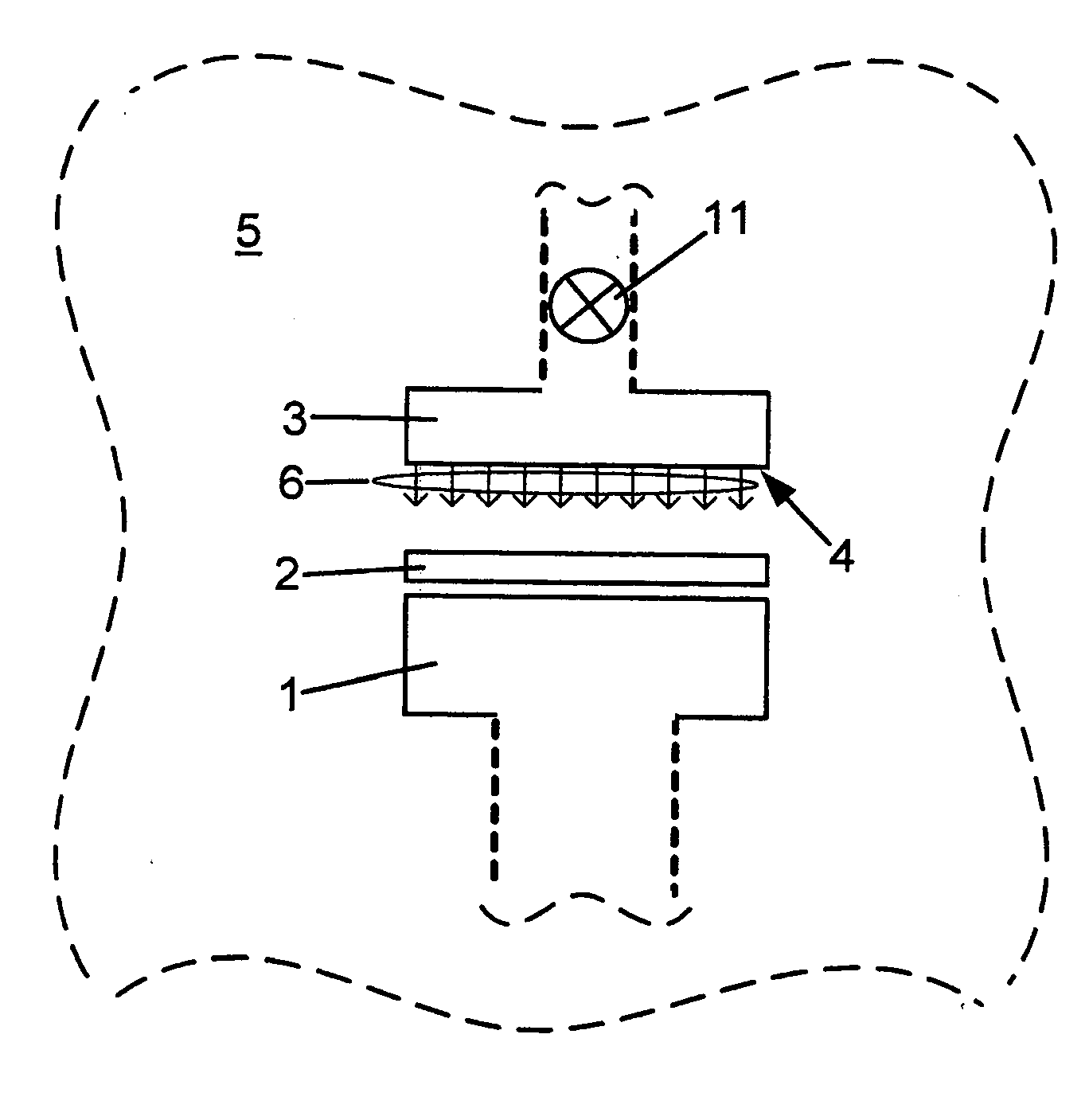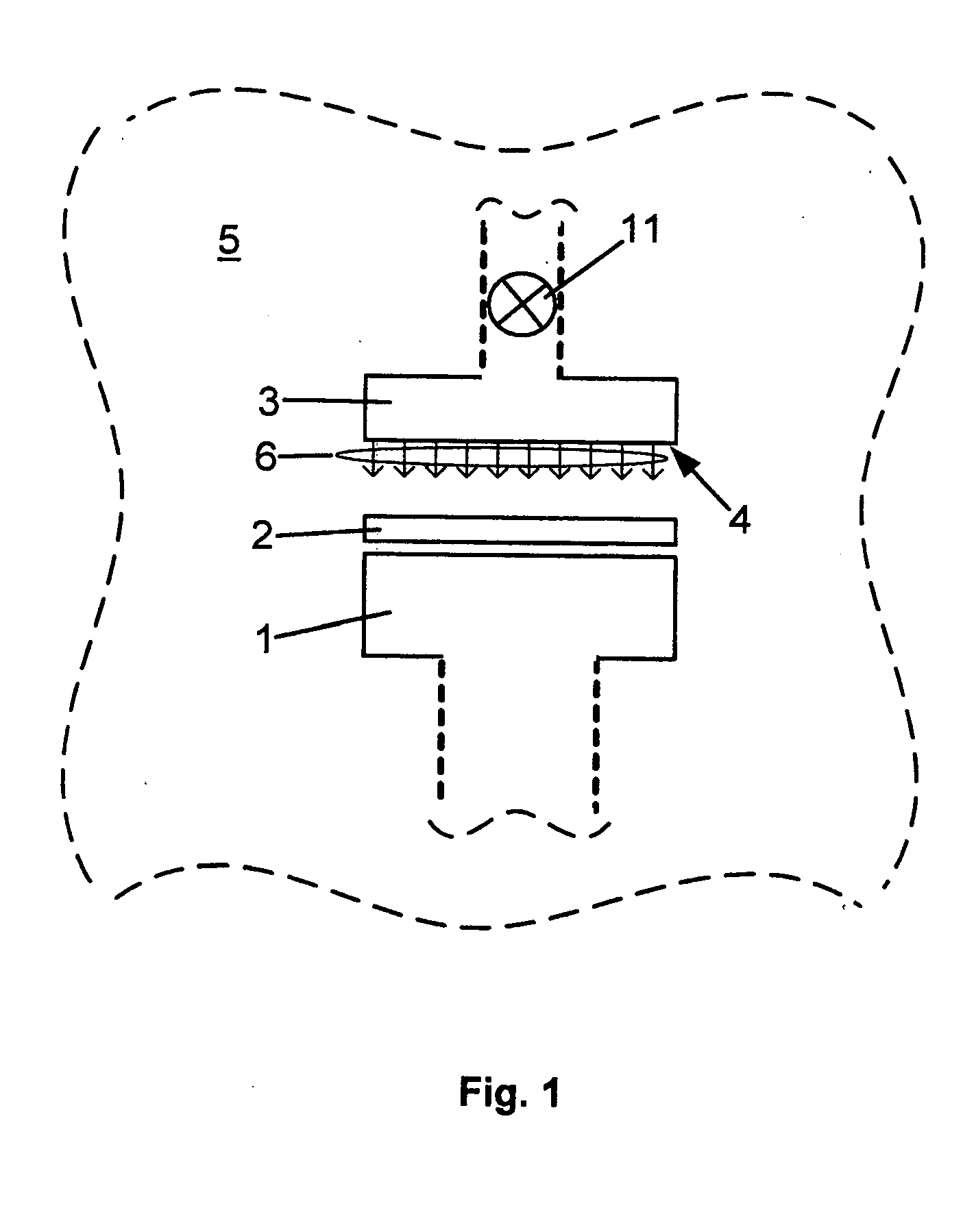Constant emissivity deposition member
a deposition member and constant emissivity technology, applied in the direction of solid-state diffusion coating, crystal growth process, coating, etc., can solve the problems of substrate temperature drift, low showerhead temperature, and low pyrolytic decomposition of mocvd precursors, so as to achieve the effect of altering the delicate balan
- Summary
- Abstract
- Description
- Claims
- Application Information
AI Technical Summary
Benefits of technology
Problems solved by technology
Method used
Image
Examples
Embodiment Construction
[0008]FIG. 1 shows a symbolic cross sectional view of a deposition apparatus, typically a low pressure deposition apparatus. Although the present invention is applicable to any apparatus used for depositing of material layers, the figure is closest to a chemical vapor deposition (CVD) a low pressure apparatus, as an exemplary embodiment. One skilled in the art would appreciate that in general such system are very complex. Consequently, the figure is depicting only those parts of the apparatus which are relevant for the present invention with the surrounding dashed lines indicating the rest of the system.
[0009] A deposition member 3, in case of a CVD, or MOCVD apparatus called a showerhead, is adapted to discharge at least one deposition material 6 during a low pressure deposition process. In an exemplary embodiment, such as MOCVD, deposition materials are typically precursor gases. However, in differing low pressure deposition apparatuses, for instance in MBE systems, the depositio...
PUM
| Property | Measurement | Unit |
|---|---|---|
| thick | aaaaa | aaaaa |
| thick | aaaaa | aaaaa |
| pressure | aaaaa | aaaaa |
Abstract
Description
Claims
Application Information
 Login to View More
Login to View More - R&D
- Intellectual Property
- Life Sciences
- Materials
- Tech Scout
- Unparalleled Data Quality
- Higher Quality Content
- 60% Fewer Hallucinations
Browse by: Latest US Patents, China's latest patents, Technical Efficacy Thesaurus, Application Domain, Technology Topic, Popular Technical Reports.
© 2025 PatSnap. All rights reserved.Legal|Privacy policy|Modern Slavery Act Transparency Statement|Sitemap|About US| Contact US: help@patsnap.com


